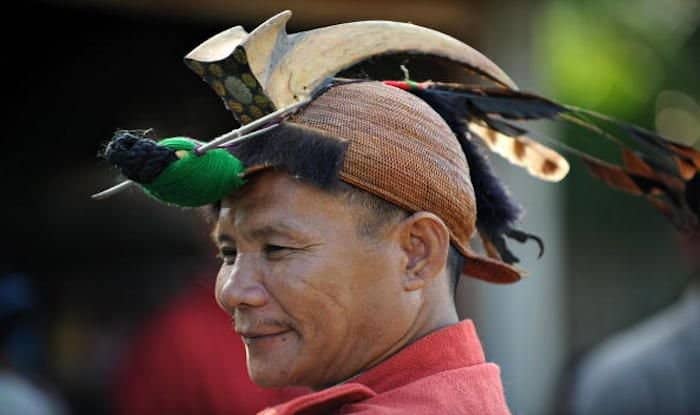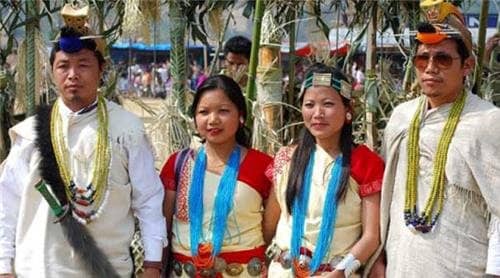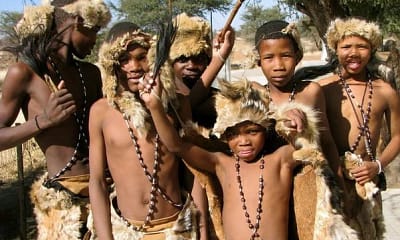People & Culture
The Thrilling Culture of The “Nyishi Tribe” From India
Published
3 years agoon
By
M N Ridwan
The Nyishi community makes up the majority of Arunachal Pradesh’s ethnic population in northeastern India.
They live in Kra Daadi, Kurung Kumey, East Kameng, West Kameng, Papum Pare, and portions of Lower Subansiri, Kamle, and Pakke Kessang districts in Arunachal Pradesh.
In fact, the districts with the highest concentrations of Nyishi people are Kurung Kumey and Kra Daadi.
Meanwhile, Assam’s Sonitpur and North Lakhimpur districts are also home to the Nyishis.
According to the 2001 census, they are Arunachal Pradesh’s most populous tribe with a population of about 300,000.
The Nyishi are frequently polygynistic. It denotes one’s social standing and financial stability and is useful in trying circumstances like clan conflicts, social hunts, and other social activities.
But as society becomes more contemporary and as Christianity gains popularity, this practice is dwindling. They are separated into various clans and follow a patrilineal line of descent.
The Nyishi Economy
The Nyishi are farmers who engage in jhum, a type of shifting farming known as rt rung-o in Nyishi.
As self-subsistence products, the main crops grown include paddy (rice), toppu (maize), mekung (cucumber), tak-yi (ginger), aeng (yams), temi (millet), thumpe (pumpkin), perring (bean), and some leafy vegetables.
In addition to fish, meat from other animals, and edible tubers, rice is the main diet consumed by the population.
They had a barter system before the development of the market economy in the West.
Moreover, they placed a high priority on balanced reciprocity in their economic system as well as general reciprocity.
Their Attire/Code of Dressing
With locally produced thread, Nyishi women traditionally plait their hair and tie it neatly at the forehead.
The knotted hair is pierced horizontally by a brass skewer. The arms, legs, and waist are all adorned with cane rings.
Meanwhile, men wear cane helmets with the huge Indian hornbill’s beak atop them.
Since the great Indian hornbill is a protected species, it is now against the law to use actual hornbill beaks. This is also because more people are becoming aware of the problem as a whole.
These days, cane or other material beaks are added to it, and the full headgear/cane helmet is easily accessible for purchase on the market.
Additional embellishments, which varied according to the wearer’s status and were emblems of manly bravery.
The men’s clothes are divided into two categories: sleeveless shirts (letum) and shirts with black and white stripes (pomo), both made of thick cotton fabric and striped gaudily with blue and red.
A mantle of cotton or wool is also worn over the shoulders and around the throat. Also worn are beaded strings of various sizes and hues, primarily for ornamentation and to signal the wearer’s rank.
They also carry a knife (chighi) in a bamboo sheath that is generally lined with animal furs, as well as a machete or dao (uryu) (short sword) in Nyishi.
Their arsenal consists of a bow and arrows with poisonous tips, a huge sword (uryu), and a spear with an iron head (um-yu).
Furthermore, they wear black cloaks made of local fiber over their shields, which are constructed of sabbe buffalo hide and covered both on the chest and back during battle.
The Nyishi women typically wear red (jwle/jwlang) tops underneath a sleeveless mantle of striped or plain cloth that is tucked firmly over the breast and covers the body from the armpits to the center of the legs.
The waist is fastened with a ribbon. At the waist, a girdle made of metal disks, beads, and cane garters is worn. Their hair has a center part, which is plaited and is pulled up into a chignon just above the nape of the neck.
Also, they wear hefty bracelets made of various metals, multicolored bead necklaces, brass chains, metal bells, and enormous brass or silver earrings, and multicolored bead necklaces.
Their Religion
The Nyishi people celebrate Nyokum, a celebration that honors their ancestors.
Although Christian missionaries started working in Arunachal Pradesh in the 1950s, the government severely restricted much of their proselytizing efforts until the 1970s.
A 2011 poll found that 31% of the Nyishi population had converted to Christianity, 29% to Hinduism, while the majority of the remaining population still adhered to the traditional indigenous Donyi-Poloism.
Conclusion
That’s it for the Nyishi tribe. Hope you enjoyed the thrilling culture of these indigenous people. Stick around and stay tuned for more interesting updates to come.
See Also: Parliament Freezes Over GHC2bn Estimate Demarcated for Finance Ministry





















